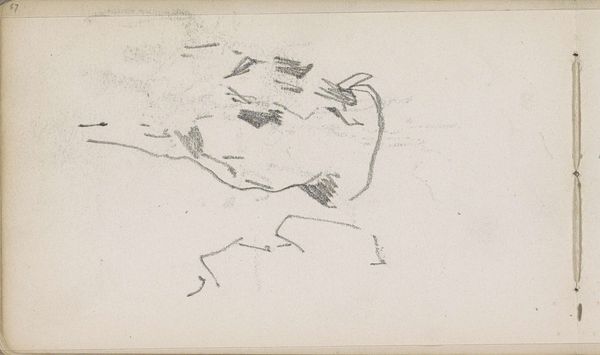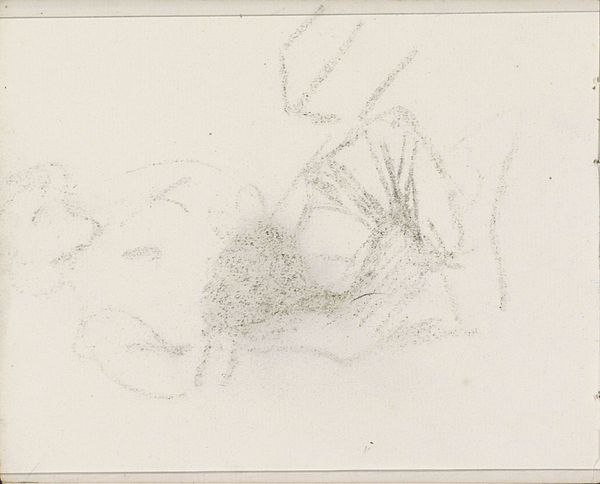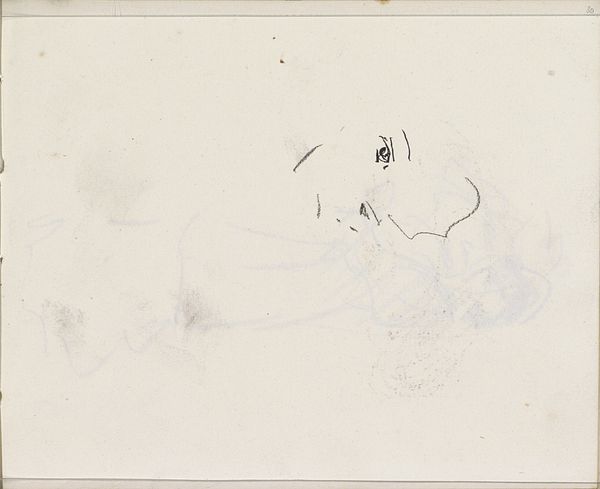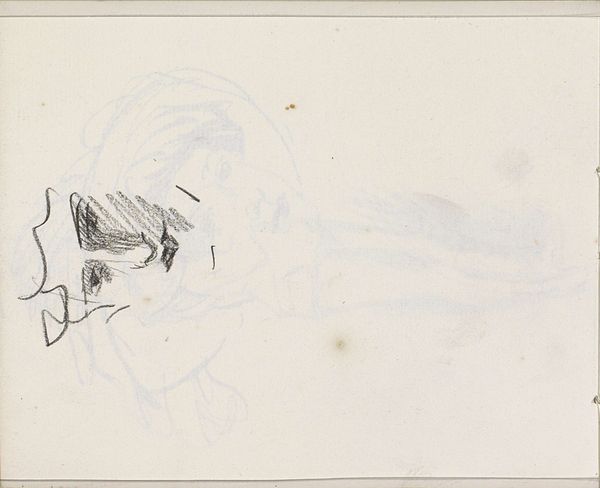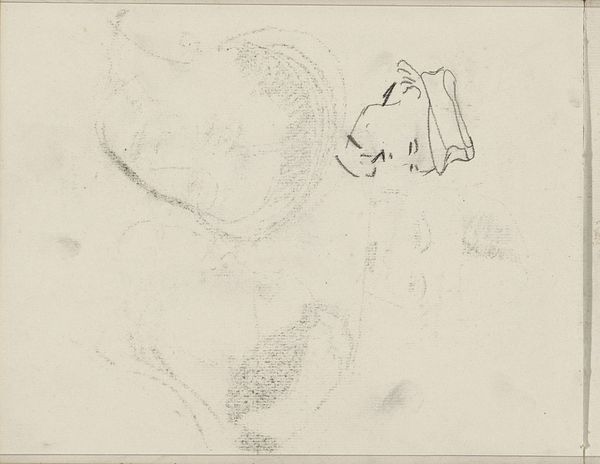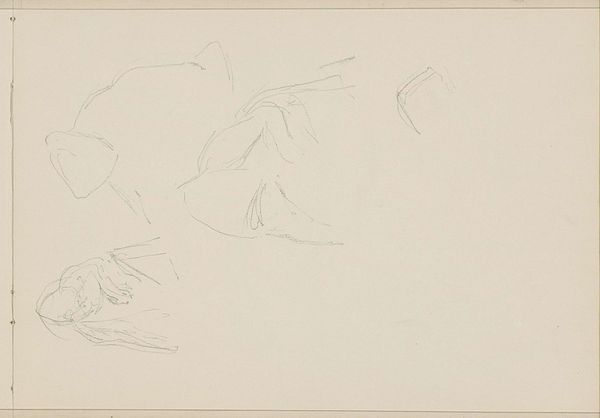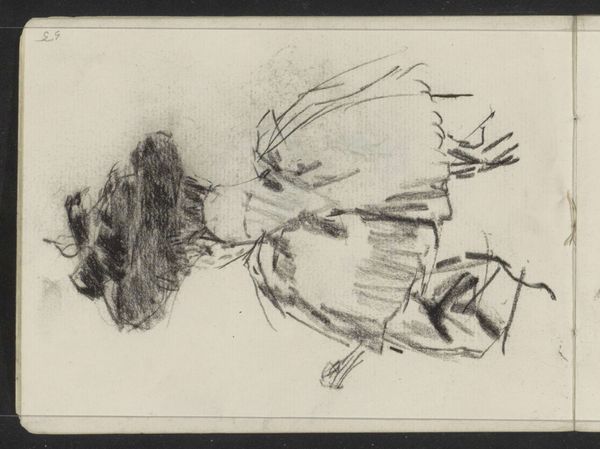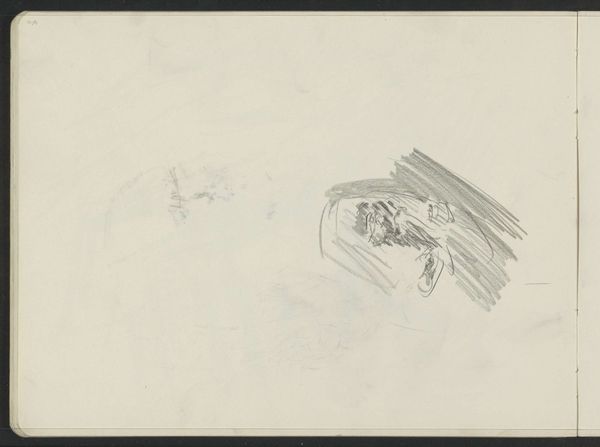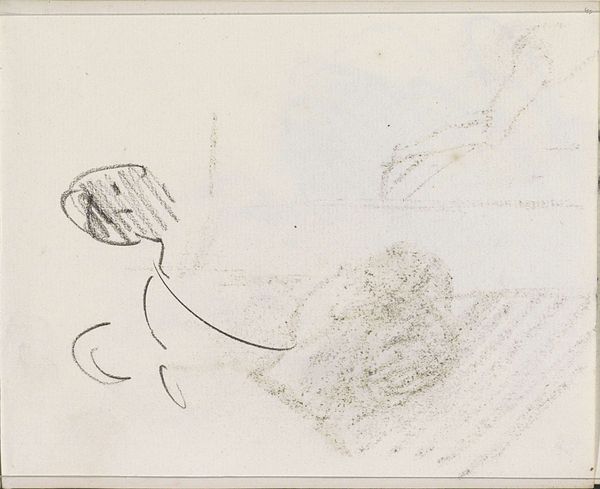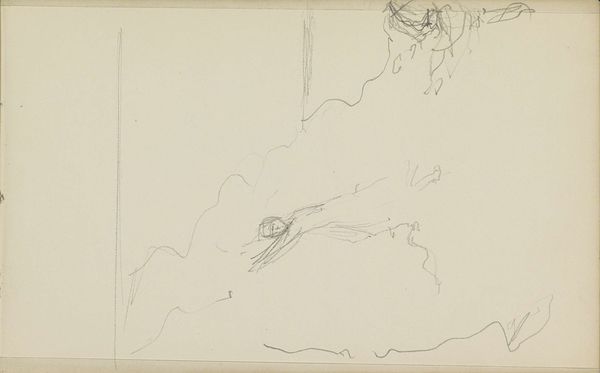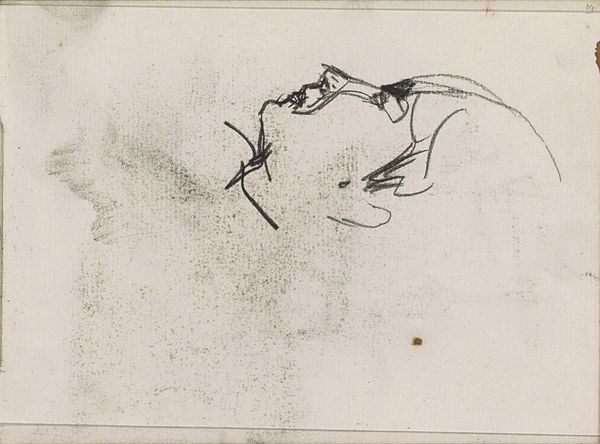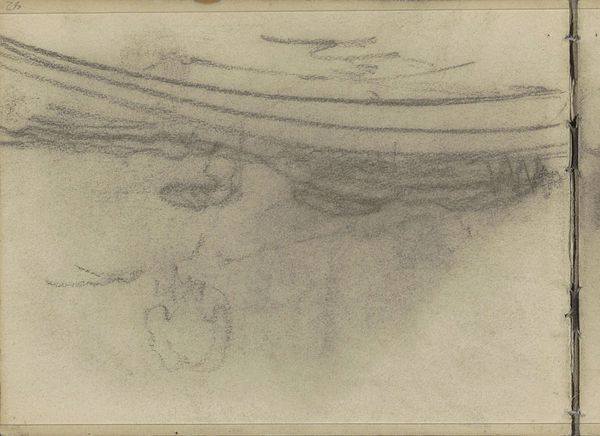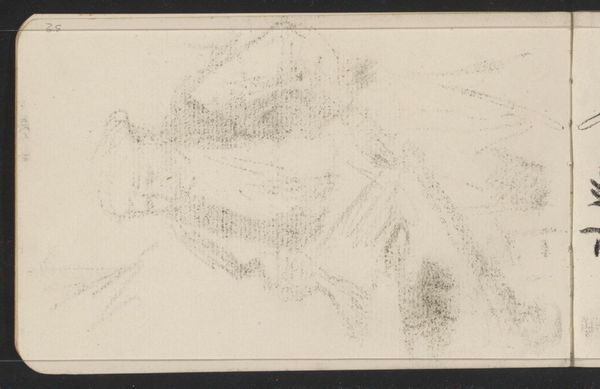
Copyright: Rijks Museum: Open Domain
Curator: Isaac Israels created this sketch, titled "Gezicht van een vrouw," sometime between 1886 and 1903. It’s part of the Rijksmuseum's collection. What’s your initial take on this one? Editor: There’s an intriguing immediacy to it. The composition, with its sparse lines, feels almost ghostly. It’s delicate and suggestive, a fragment of a captured moment. Curator: Precisely. Considering Israels’ background and the time frame, it’s important to remember the restrictive social environment for women in that era. How does this seemingly simple sketch perhaps interact with or subvert those expectations? Editor: You can see how he experiments with form using very little detail. It's less about the sitter's individuality and more about his process and material. I see delicate use of the pencil. Note how the face is suggested rather than defined. Curator: True, but the act of sketching, even if seemingly incomplete, provided women, even within limitations, a form of visual representation, a subtle assertion of presence within a male-dominated artistic sphere. How can this seemingly private sketch disrupt patriarchal modes of viewing? Editor: I find it hard to immediately frame this particular work within the feminist or cultural framework that you suggest. Rather, the emphasis seems to be on form and the sketchy process that lends it the impressionistic style we often see in the artist’s better-known paintings. What you see, in my interpretation, is visual expression through the materiality of the pencil, its tones and values. Curator: It's about unveiling power structures, you know. The gaze isn’t neutral; it’s shaped by historical imbalances. These drawings can speak volumes about the silent narratives embedded in these women's lives, if one engages the language of historical socio-politics. Editor: Ultimately, though, it comes down to the basics. We both brought unique ways of interpreting the artist’s method with regard to structure and the composition, even if in this brief discussion, our stances were different. Curator: A lens on how art serves both the artist’s style and broader socio-political meanings. A dialogue, if anything else, to reveal various insights.
Comments
No comments
Be the first to comment and join the conversation on the ultimate creative platform.
